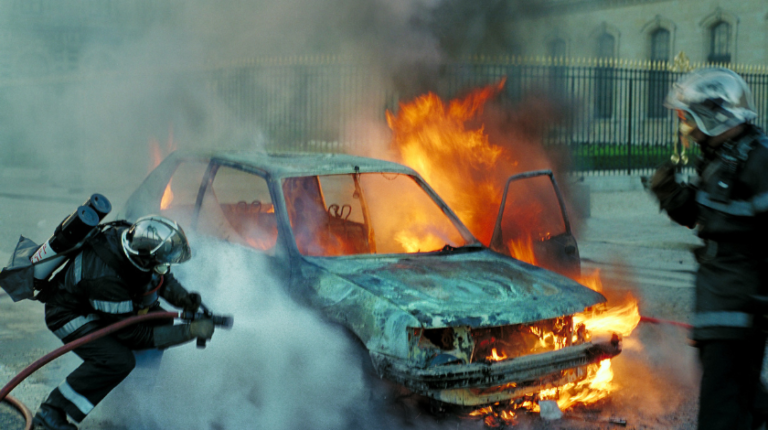Common Causes of Car Accidents
Table Of Contents
Anyone can experience car accidents, but knowing the typical reasons can assist in preventing them. Distracted driving, speeding, and drunk driving are cited as some of the main factors leading to accidents. Distracted driving includes texting, eating, or adjusting the radio. Speeding reduces your ability to react quickly to unexpected events, while alcohol and drugs impair your judgment and reaction times.
In areas like Brooksville, the support of experienced legal professionals can be crucial. You can find Brooksville car accident lawyers who can assist in case of an unfortunate event. Having legal professionals on hand will help you be ready to manage the consequences of an accident, whether it be working with insurance companies or navigating legal processes. Keeping this information handy is a proactive step towards ensuring you’re prepared for any situation on the road.
Essential Safety Measures
- Wear Seatbelts: This is a no-brainer but often overlooked. Seatbelts can save lives by preventing you from being thrown out of the vehicle during a crash. They also reduce the risk of death for front-seat passengers by 45%.
- Obey Speed Limits: Adhere to speed limits to give yourself and others on the road enough time to react and prevent dangers. Driving too fast puts your life and the lives of other people on the road at risk.
- Avoid Distractions: Keep your phone away and concentrate on driving. A brief moment of not paying attention can result in a severe accident. Activities like texting and eating while driving significantly increase your risk of a collision.
- Never Drive Under the Influence: Alcohol and drugs can hinder your driving skills by reducing your reaction time and decision-making abilities. Make sure to have a designated driver or use alternate transportation when consuming alcohol.
The Importance of Vehicle Maintenance
Regular vehicle maintenance is crucial to your safety on the road. Basic inspections, such as verifying that your brakes and tires are adequately inflated, can be very beneficial. Preventable mechanical failures cause many accidents. Routine maintenance checks can identify and fix potential problems before they become hazardous. Regularly scheduling inspections and quickly resolving any problems can help avoid malfunctions and keep your vehicle in optimal condition. Neglecting maintenance can lead to unexpected problems and increase the likelihood of accidents. For instance, worn-out brake pads can significantly reduce your vehicle’s stopping power, while under-inflated tires can affect your car’s handling and fuel efficiency.
Tips for Defensive Driving
Defensive driving involves being aware of and reacting appropriately to the actions of others on the road. Here are some tips:
- Keep a safe distance from the car in front of you, which gives you adequate time to react if the vehicle suddenly stops.
- Avoid aggressive driving behaviors like tailgating and cutting off other drivers. These actions can provoke road rage and increase the risk of accidents.
- Be prepared to react to potential hazards. Always have an escape route in mind, whether switching lanes or pulling over.
- Always use your indicators when changing lanes or turning. It signals your intentions to other drivers and helps everyone navigate the road more safely.
These practices help you avoid accidents and contribute to smoother traffic flow. Defensive driving is about anticipating potential problems and having the skills to handle them safely.
Technology and Road Safety
Modern technology has significantly improved road safety. Features like anti-lock brakes, electronic stability control, and advanced driver-assistance systems can prevent accidents. Regularly scheduling maintenance checks and promptly addressing any issues can prevent breakdowns and keep your vehicle in optimal condition at all times. Consider investing in a vehicle with these advanced features or upgrading your current car to include them. Adaptive cruise control, lane departure warnings, and automatic emergency braking are some of the latest technologies. These technologies’ potential life-saving benefits can outweigh the initial cost. Knowing you have the best safety features can also provide peace of mind.
Post-Accident Procedure
Initially, assess if there are any casualties and contact emergency services if needed. Then, document the scene with photos and exchange information with other parties involved. It can be significant for legal and insurance purposes. A straightforward post-accident procedure ensures you’re prepared for any situation, reducing the stress and confusion that often follow an accident.
Moreover, understanding local resources and support systems can be advantageous. Having a reliable person for legal help or medical support can assist in handling the aftermath of an accident more efficiently. Having the right contacts and being aware of the necessary actions can speed up the process of submitting insurance claims and getting reimbursed for any harm or injuries. Knowing whom to call and what steps to take can also expedite the process of filing insurance claims and receiving compensation for damages or injuries.
Community Involvement in Road Safety
Engaging in local safety programs and spreading awareness about best practices can contribute to a safer environment for everyone. For instance, organizations often hold workshops on defensive driving and provide resources for safe vehicle maintenance. Getting involved helps foster a culture of safety and responsibility on the roads. Community initiatives can also improve local infrastructure, such as better road signs and pedestrian crossings, further enhancing road safety for all residents. Collaborating with local authorities and businesses can result in more effective safety campaigns and implementing measures that protect all road users, including pedestrians and cyclists.
